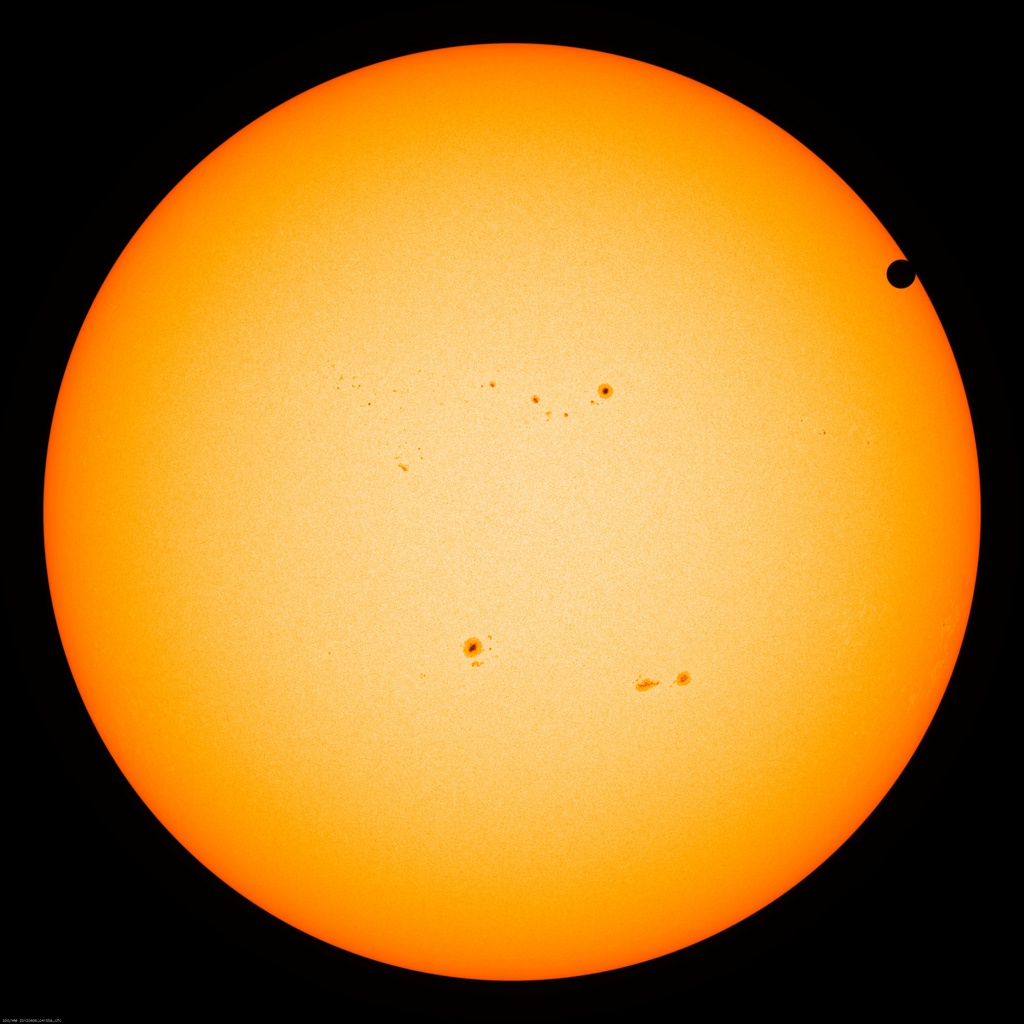
For those who have any interest in astronomy or who regularly check out the Astronomy Picture of the Day, this will be very old news, but for everyone else, I wanted to get the word out that today is the last time this century that the planet Venus will pass in front of the Sun. What is special about this, you might ask? Well, this type of transit is one of the rarest astronomical events that we can predict. Pairs of transits occur separated by a period of eight years, but these pairs are separated by over a century. You may remember the last transit of Venus which occurred in 2004. But if you miss today's, you will have to wait until 2117 to see it again.
Historically, the transit of Venus is also important, because it provided one of the first somewhat accurate determinations of the Astronomical Unit (the distance between the Earth and the Sun). Many distances in astronomy can be determined by the parallax from the Earth's motion around the Sun. The distance to an object can be determined by the change in viewing angle to that object by simple geometry. However, as a result, these distances were always in terms of the change in position of the Earth, which comes from the Astronomical Unit. Also, Kepler's third law allowed scientists to determine the distances from the other planets to the Sun, but again, this was in terms of the Astronomical Unit. However, until the 17th century, no one had a good idea of how big the Astronomical Unit was. In 1639, Jeremiah Horrocks made observations of the transit of Venus which allowed him to not only estimate the size of Venus, but also to make the most accurate (until that point) estimation of the distance from the Earth to the Sun (the Astronomical Unit). (FYI, The history involved in determining the size of the AU is actually very interesting and a lot more involved than what I've given here.)
Even for those who do not have a crazy historical bent, the transit of Venus is just plain cool! (You can think of it as an extremely small annular eclipse of the Sun.) The above image is downloaded from NASA's Solar Dynamics Observatory and will update automatically through the day. For those in the United States, the transit will be visible about sunset. For visibility times and transit paths in other parts of the world, check out NASA's websites on the Transit of Veus. If you try to view the transit first-hand, make sure you remember proper solar viewing safety. Happy Viewing!
Bill,
ReplyDeleteThank you so much for posting this. I'm excited!
Yay! I just saw the first image showing Venus entering the Sun's disk.
ReplyDeleteAnd that's all folks!
ReplyDelete